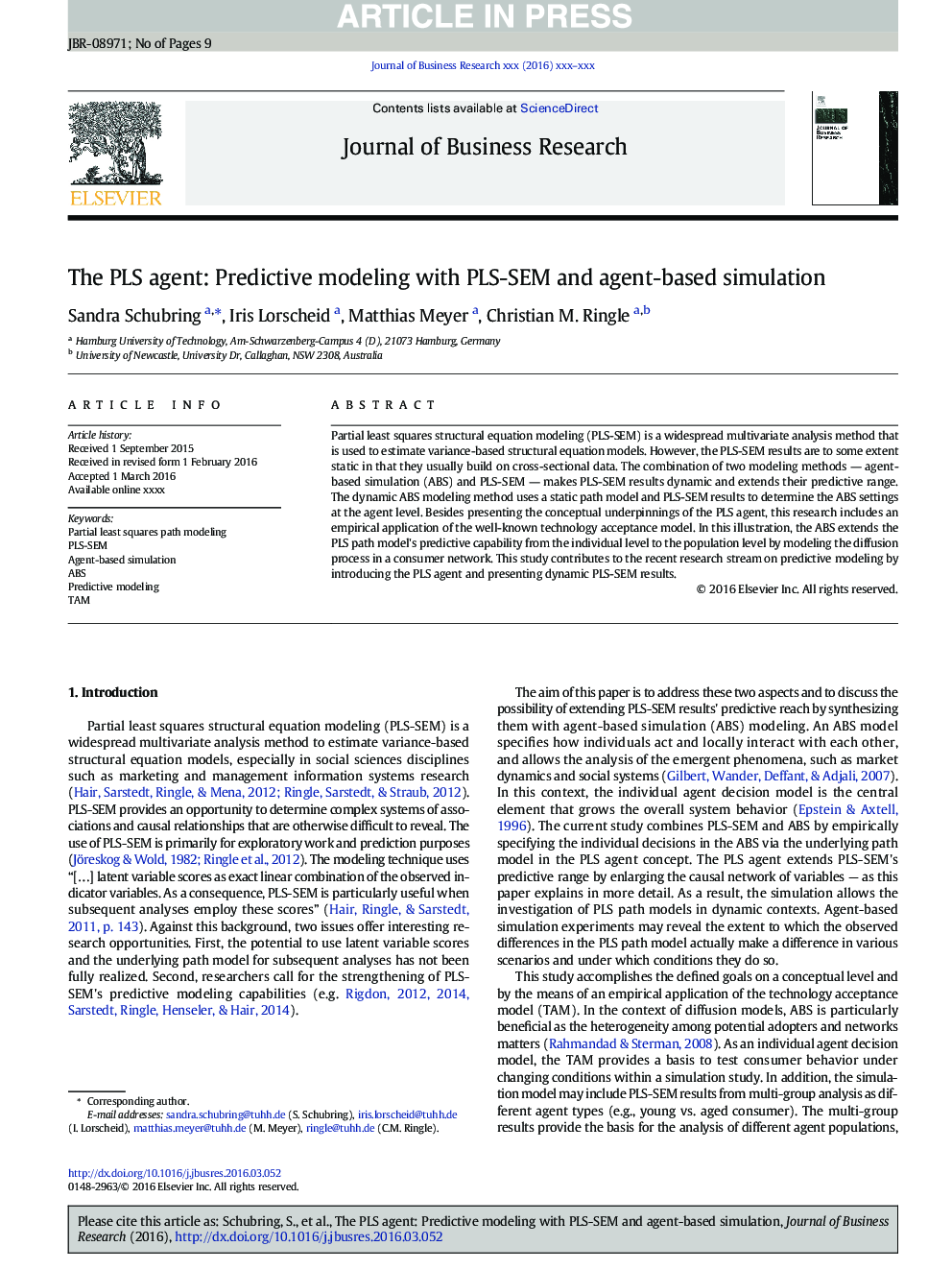| Article ID | Journal | Published Year | Pages | File Type |
|---|---|---|---|---|
| 5109915 | Journal of Business Research | 2016 | 9 Pages |
Abstract
Partial least squares structural equation modeling (PLS-SEM) is a widespread multivariate analysis method that is used to estimate variance-based structural equation models. However, the PLS-SEM results are to some extent static in that they usually build on cross-sectional data. The combination of two modeling methods â agent-based simulation (ABS) and PLS-SEM â makes PLS-SEM results dynamic and extends their predictive range. The dynamic ABS modeling method uses a static path model and PLS-SEM results to determine the ABS settings at the agent level. Besides presenting the conceptual underpinnings of the PLS agent, this research includes an empirical application of the well-known technology acceptance model. In this illustration, the ABS extends the PLS path model's predictive capability from the individual level to the population level by modeling the diffusion process in a consumer network. This study contributes to the recent research stream on predictive modeling by introducing the PLS agent and presenting dynamic PLS-SEM results.
Related Topics
Social Sciences and Humanities
Business, Management and Accounting
Business and International Management
Authors
Sandra Schubring, Iris Lorscheid, Matthias Meyer, Christian M. Ringle,
